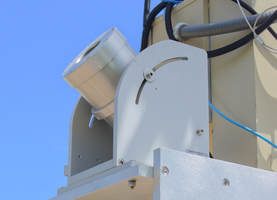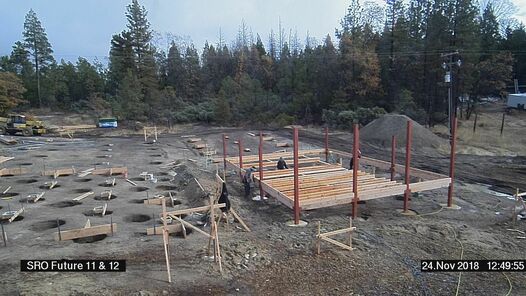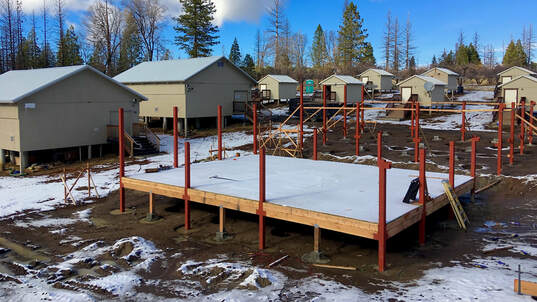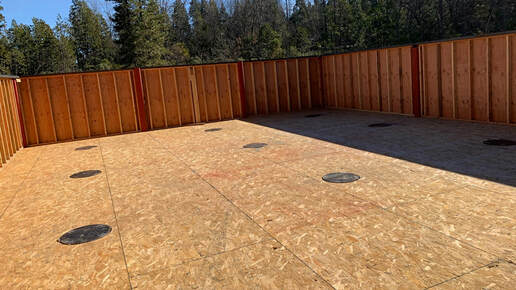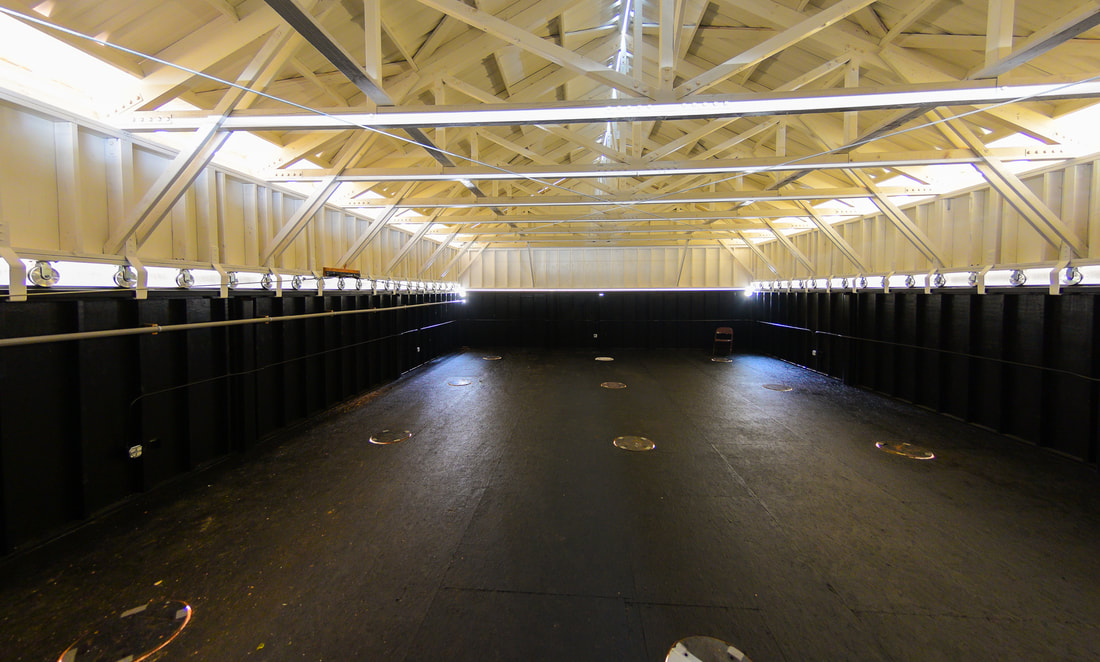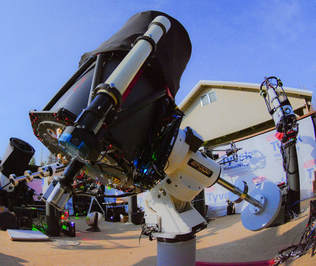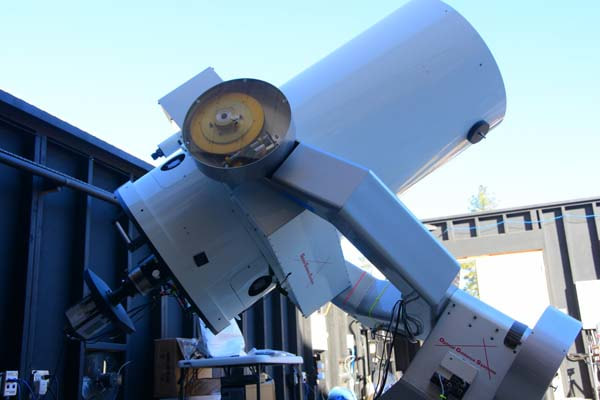Sierra Remote Observatories: An Ideal Site for Astronomers, Space Industry Professionals and Astrophotographers
An Introduction to Sierra Remote Observatories
SRO is a group of remote observatories located in the Sierra Nevada Mountains and dedicated to remote and robotic data acquisition and imaging. We will host your telescope. We have been operational continuously since 2007. We are uniquely located in the Sierra Nevada Mountains in an area with excellent imaging conditions including:
• one arcsecond summer seeing
• dark skies at 21.78 mag/sq arcsecond V band
• a very low incidence of thunderstorms
• no summer monsoons
• average wind speeds of only 1 mph
• maximum wind gusts averaging only 10 mph
• an average of 237 clear nights per year.
We have easy access, being only one hour from the Fresno-Yosemite International Airport and 4 hours from Los Angeles or San Francisco, by car. We have robust, secure and fast fiber optic internet with satellite back up and network redundancy and security. Roof control, opening and closing, is based on on-site live weather telemetry. Our clients have access to roof position files so they can optimize their imaging time and also the ability to have weather/roof position/seeing conditions embedded into their fits files. Our clients include astrophysicists, space industry professionals, astronomical institutes and advanced amateur imagers. Contact us if you have any questions or if you are looking for a unique site to place your telescope.
Read More
• one arcsecond summer seeing
• dark skies at 21.78 mag/sq arcsecond V band
• a very low incidence of thunderstorms
• no summer monsoons
• average wind speeds of only 1 mph
• maximum wind gusts averaging only 10 mph
• an average of 237 clear nights per year.
We have easy access, being only one hour from the Fresno-Yosemite International Airport and 4 hours from Los Angeles or San Francisco, by car. We have robust, secure and fast fiber optic internet with satellite back up and network redundancy and security. Roof control, opening and closing, is based on on-site live weather telemetry. Our clients have access to roof position files so they can optimize their imaging time and also the ability to have weather/roof position/seeing conditions embedded into their fits files. Our clients include astrophysicists, space industry professionals, astronomical institutes and advanced amateur imagers. Contact us if you have any questions or if you are looking for a unique site to place your telescope.
Read More
What's New at Sierra Remote Observatories
|
Rapid Growth at SRO
When SRO saw first light in 2007 there were 8 individual observatories with only two initially in use, those two being used by the original founders of SRO, Keith Quattrocchi and Mel Helm. With SRO's excellent seeing conditions we were producing high quality images and within months the 8 observatories were leased with requests for more space. As a result we put up our first multi-telescope observatory, designed to house up to 14 telescopes. Within a few years that building filled and a second building was constructed. It too quickly filled. As a result we have recently constructed two new multi-telescope buildings. These are both near completion and can house scopes with apertures up to 0.75 meters. Larger meter class telescopes can be placed in domed observatories on site. You can read about the two new multi-telescope buildings in the article below. |
New Seeing Monitors at SRO
Our Alcor Systems Cyclope Seeing Monitor was installed two years ago and continues to demonstrate 1 arcsecond summer and 1.2 arcsecond winter seeing at SRO. The Cyclope seeing monitor is used world wide and is an industry standard. In addition we are also adding the SBIG Seeing Monitor and the newer Santa Barbara Scientific Seeing Monitor 2. Having multiple systems in place allows our clients to use these systems as a check on each other. Multiple studies have found these systems produce converted zenith seeing data comparable to using the much more cumbersome DIMM method. We will continue to use these seeing monitors and other weather monitors to collect long term statistics on our seeing and weather conditions. Read More |
Infrastructure Updates at SRO
At SRO we are continually improving and updating the infrastructure that allows uninterrupted data collection and imaging. We have fast fiber optic internet, satellite internet backup and secure router connectivity with redundancy. SRO has full time technical support. Most problems can be fixed on site or shipped out and replaced. We supply two hours per month of free support with additional support available, and will assist you with your telescope installation and updating. Thereafter our staff will be your "eyes, ears and hands" on-site. Our goal is to make your remote data acquisition and imaging experience as trouble free as possible. Read More |
New Multi-telescope Buildings 11 and 12 Nearing Completion
On November 3rd, 2018 we began construction of two large custom designed multi-telescope buildings at SRO. These are nearly complete with new clients moving in this month. We have constructed two multi-telescope buildings in order to make sure we have available space for those interested in the future. These buildings are 40 x 30 feet in size with 10 foot ceilings. There is nearly 10 feet of space between each telescope. This allows us to easily handle larger telescopes, such as 28" or 30" telescopes in equatorial or Alt-Az configuration. Although we can accommodate smaller telescopes, the observatory was designed to handle larger telescopes. At SRO we have seen a clear trend towards 24", 28" or larger telescopes, as we've seen a higher proportion of astronomers and space industry professionals at SRO. Also, as the infrastructure update details (see article above), we have endeavored to streamline and modernize the infrastructure of SRO. We now have fast fiber optic internet, an improved and standardized roof control, emergency satellite internet backup and improved security. We also now have two full time technicians on site 7 days a week with urgent or emergency help available 24 hours a day. Our goal at SRO has always been to build a site which is as trouble free and seamless as possible, so our clients can focus on unencumbered data acquisition and imaging.
Selected Images of the New Construction of the Multi-telescope Observatories
|
Early Construction of Building 11 and 12
Floor joists in place for building 12 and the 6 foot deep dugouts for the telescope and foundation piers completed for building 11. Construction is steel and wood with a roll off roof design. With average wind speeds of 1 mph, the roll off roof design is ideal for SRO. Note the building is elevated off the ground for even air flow beneath. The floors are all wood to decrease evening thermal contamination that occurs with concrete floors. |
New Construction with SRO in Background
In this image we see the early construction of building 11 and 12 with the remainder of SRO as the backdrop. At SRO there are currently over 40 telescopes in operation, some operational since the observatory's first light in 2007. Our clients include astronomers, space industry professionals, astronomical institutes, and advanced astrophotographers. We take pride in the depth and diversity of our clients, spanning the gamut of from scientists and space industry professionals to amateur astrophotographers. |
|
Steel Base Plates Embedded in 6 Foot Deep Concrete Piers
At SRO the steel plates to which the telescope piers attach, are custom built by Ross Engineering, located 20 minutes from the observatory. These plates are made of 1 inch thick solid steel with J-bolts on the bottom. The J-bolts and bottom of the steel plates are embedded in the underlying reinforced concrete pier (which extends 6 foot deep). The bolt pattern is both SRO proprietary and Software Bisque. We understand that having a solid foundation is critical to serious data acquisition. |
Walls Up for Buildings 11 and 12
When completed these buildings will be 40 x 30 foot in size and able to house 12 telescopes, including larger 24", 28" and even 30" aperture telescopes. These buildings will have fiber optic internet with secure VPN connections. Roof control has been improved and standardized. There are two full time technicians on site daily with emergency 24/7 technical support available. We have designed and improved our infrastructure so our clients can focus on data acquisition and imaging. |
|
Buildings 11 and 12 Essentially Completed
Building 11 and 12 nearly completed. We are currently installing roof motors and computerized roof control. We expect the buildings to be fully operational in 30 days. Several clients are already slated for installation in Building 11. Compared to the previous multi-telescope buildings these have increased space between telescopes and a higher roof. This allows us to house larger telescopes in the 30 x 40 foot observatory with aperatures up to 0.75 meters. |
Interior of Building 11: Roof Control and Ethernet Being Placed
The interior of Building 11, with several clients moving in over the next month. The one inch thick steel base plates visible. The layout will allow for 12 larger telescopes, up to 0.75 meters of aperture. Larger, meter class telescopes can be accommodated in individual clamshell observatories, which can be placed on site. |
Images and Contact Information
|
Fisheye view of SRO with the 4 larger multi-telescope buildings in the foreground and some of the 8 smaller private observatories in the background.
The Astronomical Telescope of the University of Stuttgart (ATUS) was established by the University's Institute of Space Systems with support of the Stratospheric Observatory for Infrared Astronomy (SOFIA) and funded by the DLR Space Administration.
The Korean Astronomy and Space Sciences Institute (KASSI's) 24" OGS. They are conducting polarimetry of the moon's surface.
|
The SRO newsletter is sent out semiannually. Our goal is to keep clients and interested professionals aware of changes, updates and projects at SRO. Feel free to contact us by phone or email at any time and with any questions you may have. Our phone numbers and email are listed below : Contact Information: Corporate Address 1865 E. Alluvial Ave, Ste 102 Fresno CA 93720 Phone: 530-401-0643 [email protected] Observatory Location: Auberry, California General Inquiries: [email protected] Founder, and Observatory Co-Manager Keith Quattrocchi [email protected] 530-401-0643 Founder, and Observatory Co-Manager Mel Helm [email protected] Technical Support: Evan Cornelson [email protected] & Sam Miller [email protected] Website: www.sierra-remote.com |
The iTelescope.Net's 24" Planewave CDK.
The National Astronomical Research Institute of Thailand's (NARIT's) 0.7 meter Planewave telescope (CDK 700).
Dr. Fred Ringwald's 16" DFM Ritchey-Chretien Telescope. Dr. Ringwald, an astrophysicist at Fresno State University, has published dozens of peer reviewed articles on cataclysmic variables with data from SRO.
|



